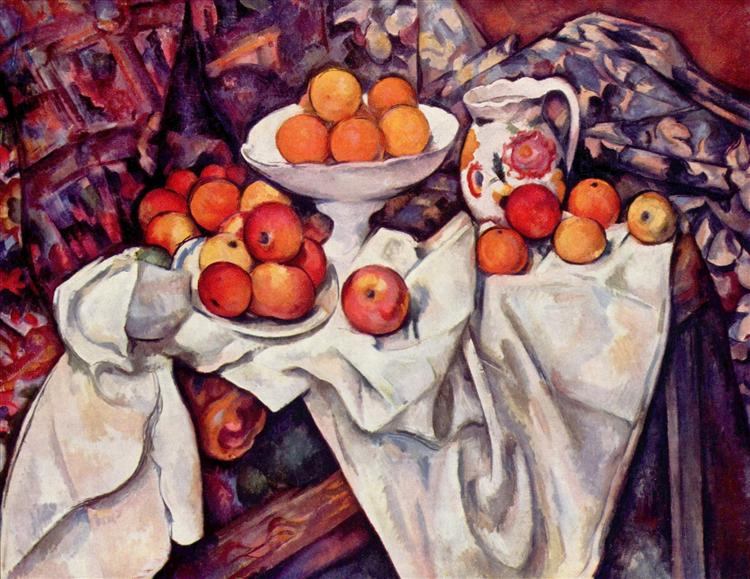Descrizione
Paul Cézanne, a central figure of post-impressionism, offers us in his work "Apples and Oranges" (1900) a masterful exploration of still life that transcends the mere representation of objects. This painting, which is in the collection of the Museum of Modern Art in New York, turns the simple act of observing into a profound sensorial and emotional experience.
The canvas is arranged in a composition that emphasizes the arrangement of fruits on a table. The apples and oranges, with their vibrant colors, are almost the protagonists in a carefully orchestrated setting. Cézanne combines warm and cool tones in a harmonious balance. The red apples stand out with an almost palpable luminosity, while the gold and yellow of the oranges complement each other in a visual dialogue that captures the viewer's attention. Each object, in its shape and color, seems to invite you to touch it, establishing an almost intimate connection with the viewer.
A fascinating aspect of Apples and Oranges is Cézanne’s signature use of the brush. His strokes, though seemingly loose and spontaneous, reveal the meticulousness and thought behind each application of pigment. The way the fruits are constructed from simple geometric dimensions is a testament to Cézanne’s interest in depicting reality from multiple angles, a principle that would later influence Cubism. The way the shadows fall on the surface of the table and how they relate to the light on the fruits add an almost sculptural dimension to the work, suggesting a volume that defies the two-dimensionality of painting.
Cézanne, with his focus on the interplay between form and colour, is not only interested in the representation of the object, but also in the relationship between space and light. The choice of the background, a soft tone that does not distract attention from the fruits, defines the space in which the objects are installed, thus creating depth and emphasis on the foreground. This depth is enhanced by the asymmetrical arrangement of the fruits, which are not grouped uniformly, causing a dynamic effect that catches the eye.
The work reflects Cézanne's ability to transform the everyday into something sublime. In an art world that, at the end of the 19th century, was moving toward more emotional and less formative representations of reality, Cézanne proposed a new way of seeing that sought to show the essence of his subjects. In "Apples and Oranges," the viewer is confronted not just with an arrangement of fruit, but with a meditation on color, form, and perception—a point of view that saw each object as part of a whole, revering the very nature of art.
The historical value of this work is incalculable, not only as a milestone in Cézanne's career, but also because it anticipates artistic movements that would develop in the 20th century. Cézanne, by transforming still life into something that invites contemplation and reflection, secures his place in the history of art, and therefore, "Apples and Oranges" stands not only as an example of masterful technique, but as a testimony to the artist's ability to transgress the limits of his time.
KUADROS ©, a famous painting on your wall.
Hand-made oil painting reproductions, with the quality of professional artists and the distinctive seal of KUADROS ©.
Painting reproduction service with satisfaction guarantee. If you are not completely satisfied with the replica of your painting, we will refund 100% of your money.

